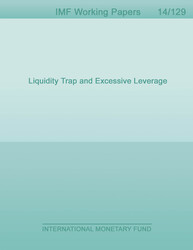
Liquidity Trap and Excessive Leverage
We investigate the role of macroprudential policies in mitigating liquidity traps driven by deleveraging, using a simple Keynesian model. When constrained agents engage in deleveraging, the interest rate needs to fall to induce unconstrained agents to pick up the decline in aggregate demand. However, if the fall in the interest rate is limited by the zero lower bound, aggregatedemand is insufficient and the economy enters a liquidity trap. In such an environment, agents' exanteleverage and insurance decisions are associated with aggregate demand externalities. The competitive equilibrium allocation is constrained inefficient. Welfare can be improved by ex-ante macroprudential policies such as debt limits and mandatory insurance requirements. The size of the required intervention depends on the differences in marginal propensity to consume between borrowers and lenders during the deleveraging episode. In our model, contractionary monetary policy is inferior to macroprudential policy in addressing excessive leverage, and it can even havethe unintended consequence of increasing leverage.
Publication date: July 2014
ISBN: 9781498370943
$18.00
Add to Cart by clicking price of the language and format you'd like to purchase
Available Languages and Formats
| English |
Prices in red indicate formats that are not yet available but are forthcoming.
Topics covered in this book
This title contains information about the following subjects.
Click on a subject if you would like to see other titles with the same subjects.
Economics- Macroeconomics , Economics / General , International - Economics , Leverage , liquidity trap , zero lower bound , aggregate demand externality , efficiency , macroprudential policy , insurance
Summary
Copyright © 2010 - 2024
Powered by:
AIDC



